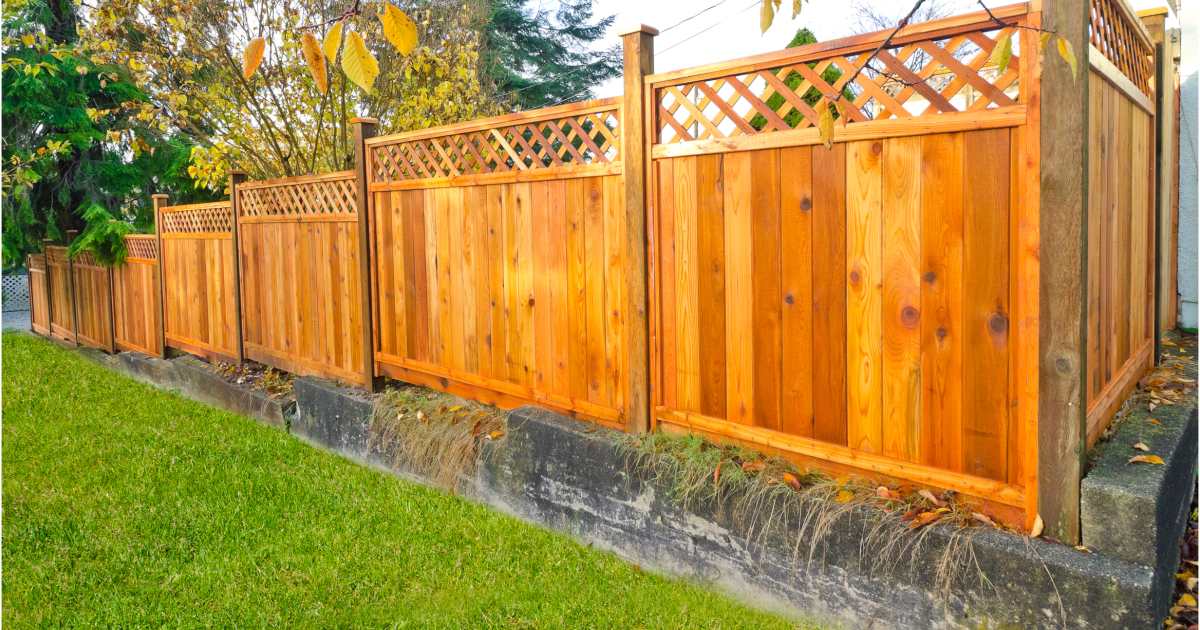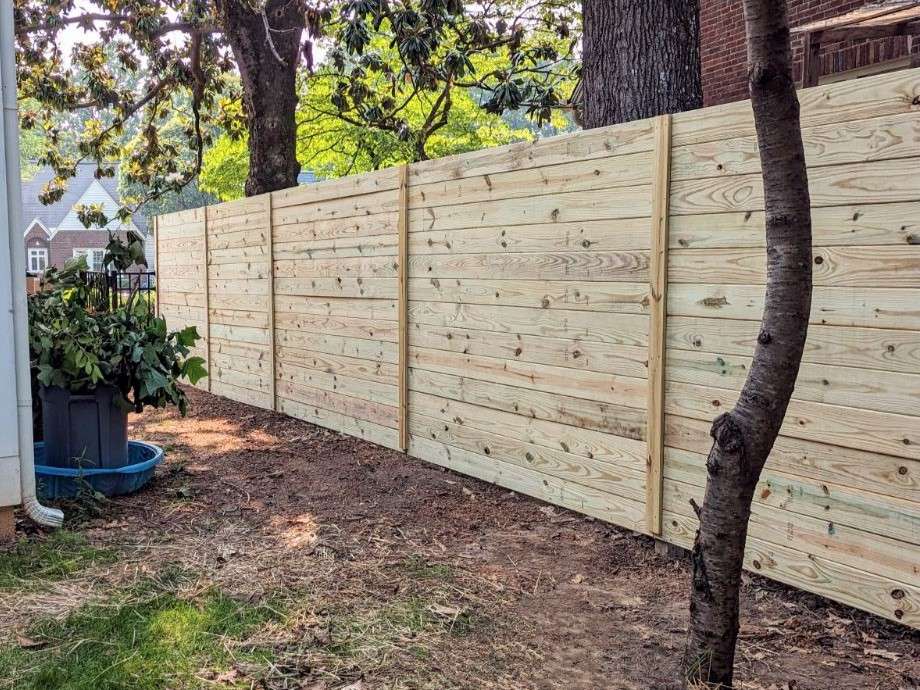All Categories
Featured
Your fence is an investment that gives privacy, protection, and visual charm. To keep it in superb shape, normal upkeep customized to its product is important. Each fence type has unique upkeep requires based on its product's resilience, direct exposure to the aspects, and various other variables. Here's a thorough guide to preserving different fencing products.
![]()
Climate Defense: Apply a high-quality sealer or discolor every 2-- 3 years to safeguard the wood from wetness and UV rays. For severe climates, yearly reapplication may be essential. Cleaning: Use a garden hose or a stress washer on a reduced setting to remove dirt and mildew. Comply with up with a mild cleaning agent for stubborn discolorations. Repair work: Examine for loose or deteriorating boards and replace them quickly. Tighten up nails or screws to maintain the framework stable. Insect Control: Usage termite-resistant wood or deal with the fence with insect repellents to avoid invasions. 2. Plastic Fencings. Vinyl fencings are prominent for their longevity and very little maintenance demands.
Cleaning: Wash the surface area with a yard pipe or a mixture of soap and water to remove dirt and algae. For hard spots, use a soft-bristle brush or a vinyl-specific cleanser. Evaluations: Frequently examine for cracks or bending, particularly after strong winds or heavy impacts. Repairs: Change any broken areas promptly. Vinyl fences usually utilize modular elements, making repair work simple. 3. Chain-Link Fences. Chain-link fences are strong and cost-efficient but call for regular focus to stop corrosion.
Rust Removal: Use a wire brush to get rid of rust from revealed areas, then apply a rust-inhibiting spray to shield the metal. Cleaning: Hose down the fencing on a regular basis to remove dirt. For crud, usage soapy water and a stiff-bristle brush. Repairs: Tighten any type of drooping areas or replace damaged web links to maintain protection. 4. Wrought Iron Fencings. Wrought iron fences offer longevity and elegance yet are susceptible to corrosion otherwise effectively maintained.
![]()
Rust Prevention: Scuff off corrosion places with sandpaper and use a rust-resistant guide adhered to by exterior steel paint. Examine for rust at least two times a year. Cleansing: Wipe down with a cloth and soapy water to keep the finish. Stay clear of rough cleaners that can harm the surface area. Repainting: Paint every couple of years to protect the metal from corrosion and keep it looking fresh. 5. Light weight aluminum Fences. Aluminum fencings are light-weight, resilient, and immune to corrosion, needing much less maintenance contrasted to wrought iron.
Cleaning: Tidy with soap and water to get rid of dust and dust. Wash completely to stop deposit. Inspections: Examine for loose hardware or damages, especially after tornados. Safeguard or change components as required. Touch-Ups: Use paint to damaged or broken areas to stop damages to the safety coating. 6. Compound Fences. Composite fencings are made from a blend of wood and plastic, combining longevity with marginal upkeep.
![]()
Cleaning: Utilize a hose pipe or a soft brush with soap and water to clean up the surface area. Stay clear of using harsh chemicals. Inspections: Search for bending, especially in severe warmth. Tighten or change any kind of damaged panels. Build Avoidance: While composite products withstand rot, maintain the fence tidy and dry to avoid mold buildup. 7. Bamboo Fences. Bamboo is a green choice however needs mindful upkeep to preserve its look and durability.
Sealing: Apply a safety sealant or varnish every 2-- 3 years to safeguard versus moisture and UV damages. Cleansing: Tidy with moderate soap and a soft sponge or brush. Stay clear of high-pressure washing, which can harm bamboo fibers. Repair services: Change harmed poles or areas to keep architectural integrity and appearance. General Maintenance Tips for All Fence Types. Normal Examinations: Examine your fencing at the very least once every period for damage, wear, or loose parts. Cutting Plants: Maintain creeping plants, shrubs, and plants far from the fence to stop moisture damages and reduce bug activity. Seasonal Modifications: In regions with snow, stay clear of piling snow versus your fence to stop structural stress and anxiety. In warm climates, check for heat-related bending or fading. Verdict. Each fence material has its one-of-a-kind upkeep requirements, however an aggressive approach to care can expand its life-span and keep it looking its best. Wood fences need more attention contrasted to vinyl or light weight aluminum, yet each product take advantage of routine cleansing, evaluations, and timely repair services. By tailoring your maintenance techniques to the kind of fencing you own, you'll ensure that it proceeds to provide personal privacy, visual, and protection allure for several years to come.

- Wood Fences. Wood fencings are valued for their all-natural appearance but call for constant maintenance to stop damages.
Climate Defense: Apply a high-quality sealer or discolor every 2-- 3 years to safeguard the wood from wetness and UV rays. For severe climates, yearly reapplication may be essential. Cleaning: Use a garden hose or a stress washer on a reduced setting to remove dirt and mildew. Comply with up with a mild cleaning agent for stubborn discolorations. Repair work: Examine for loose or deteriorating boards and replace them quickly. Tighten up nails or screws to maintain the framework stable. Insect Control: Usage termite-resistant wood or deal with the fence with insect repellents to avoid invasions. 2. Plastic Fencings. Vinyl fencings are prominent for their longevity and very little maintenance demands.
Cleaning: Wash the surface area with a yard pipe or a mixture of soap and water to remove dirt and algae. For hard spots, use a soft-bristle brush or a vinyl-specific cleanser. Evaluations: Frequently examine for cracks or bending, particularly after strong winds or heavy impacts. Repairs: Change any broken areas promptly. Vinyl fences usually utilize modular elements, making repair work simple. 3. Chain-Link Fences. Chain-link fences are strong and cost-efficient but call for regular focus to stop corrosion.
Rust Removal: Use a wire brush to get rid of rust from revealed areas, then apply a rust-inhibiting spray to shield the metal. Cleaning: Hose down the fencing on a regular basis to remove dirt. For crud, usage soapy water and a stiff-bristle brush. Repairs: Tighten any type of drooping areas or replace damaged web links to maintain protection. 4. Wrought Iron Fencings. Wrought iron fences offer longevity and elegance yet are susceptible to corrosion otherwise effectively maintained.

Rust Prevention: Scuff off corrosion places with sandpaper and use a rust-resistant guide adhered to by exterior steel paint. Examine for rust at least two times a year. Cleansing: Wipe down with a cloth and soapy water to keep the finish. Stay clear of rough cleaners that can harm the surface area. Repainting: Paint every couple of years to protect the metal from corrosion and keep it looking fresh. 5. Light weight aluminum Fences. Aluminum fencings are light-weight, resilient, and immune to corrosion, needing much less maintenance contrasted to wrought iron.
Cleaning: Tidy with soap and water to get rid of dust and dust. Wash completely to stop deposit. Inspections: Examine for loose hardware or damages, especially after tornados. Safeguard or change components as required. Touch-Ups: Use paint to damaged or broken areas to stop damages to the safety coating. 6. Compound Fences. Composite fencings are made from a blend of wood and plastic, combining longevity with marginal upkeep.

Cleaning: Utilize a hose pipe or a soft brush with soap and water to clean up the surface area. Stay clear of using harsh chemicals. Inspections: Search for bending, especially in severe warmth. Tighten or change any kind of damaged panels. Build Avoidance: While composite products withstand rot, maintain the fence tidy and dry to avoid mold buildup. 7. Bamboo Fences. Bamboo is a green choice however needs mindful upkeep to preserve its look and durability.
Sealing: Apply a safety sealant or varnish every 2-- 3 years to safeguard versus moisture and UV damages. Cleansing: Tidy with moderate soap and a soft sponge or brush. Stay clear of high-pressure washing, which can harm bamboo fibers. Repair services: Change harmed poles or areas to keep architectural integrity and appearance. General Maintenance Tips for All Fence Types. Normal Examinations: Examine your fencing at the very least once every period for damage, wear, or loose parts. Cutting Plants: Maintain creeping plants, shrubs, and plants far from the fence to stop moisture damages and reduce bug activity. Seasonal Modifications: In regions with snow, stay clear of piling snow versus your fence to stop structural stress and anxiety. In warm climates, check for heat-related bending or fading. Verdict. Each fence material has its one-of-a-kind upkeep requirements, however an aggressive approach to care can expand its life-span and keep it looking its best. Wood fences need more attention contrasted to vinyl or light weight aluminum, yet each product take advantage of routine cleansing, evaluations, and timely repair services. By tailoring your maintenance techniques to the kind of fencing you own, you'll ensure that it proceeds to provide personal privacy, visual, and protection allure for several years to come.
Latest Posts
Change Your Home with Top Quality Flooring Solutions
Published Apr 19, 25
1 min read
Siding Solutions for a Magnificent, Energy-Smart Home
Published Apr 19, 25
1 min read
Easy Coin Conversion with Coinstar and WyHy Federal Lending Institution
Published Apr 18, 25
1 min read